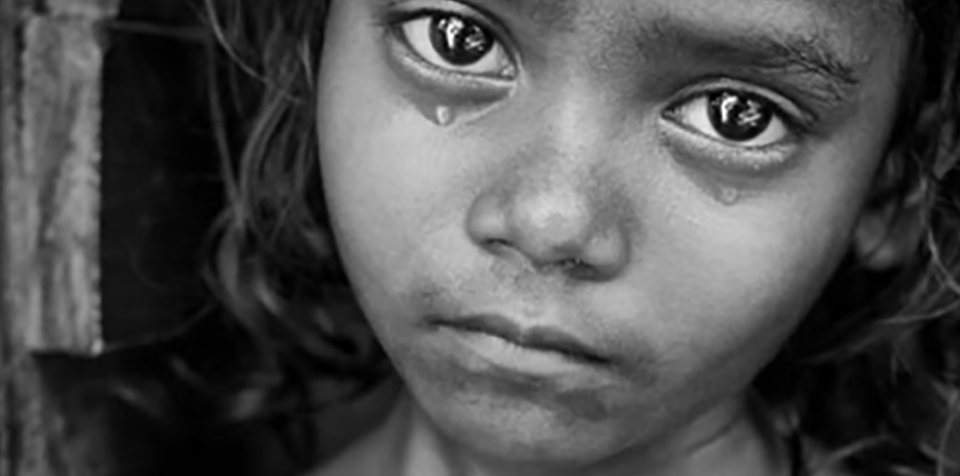Behind the guise of one of the most lucrative worldly trades and the uninterested ears of local passers-by hide these young lives, unaware of their own rights and unknowingly sold for their bodies like oil or a Persian commodity off the side of a crowded Sunday bazaar.

What are the odds?
A 2016 report conducted by the United States Department of State designates India as a Tier 2 nation with regards to trafficking – which means that although there are systems in place to combat the issue, comprehensive and efficacious care is not taken to completely resolve the matter. With regards to trafficking, India has also been defined as a transit country for primarily forced labour – where children are made to work in mills, fields and factories for no wages.
A 2015 report on registered crimes committed against children in India further shows that there are gaps in the systems that protect children’s rights. For instance, the report showed that in 2015 there were 41,890 cases of kidnapping and abduction of children and 3087 cases of the “procuration of minor girls”. However, only 221 instances of child trafficking were registered that year, with the buying of minors for prostitution at a low of 11 cases (National Crime Records Bureau 2015).
How is it that with so many children going missing, the trafficking rate is so low?
This identifies a major hole in the system, namely parents’ disregard for the loss of their own children and the unfazed outlook of local authorities to whom these young humans are nothing more than extra paperwork.
The Guardian describes one such case of child trafficking of an 11 year old name Salmaet who went missing in 2008. Her parents decided to go to the authorities only six years after the incident, and the local officials have reportedly taken no action to try to find her.
The Guardian also quotes the voice of Prasanta Dash, Head of Unicef in the state of Salmaet’s disappearance, who says, “The situation has become so grave that in these areas it is the traffickers who wield the power.”
With manipulation taking the form of leaked sexual content, threats towards the families for the lives of their other children, and false promises of possible returns of their children, traffickers in India use teenagers as barter chips and successfully convince undereducated parents to willingly give up their own children.

Why is this happening?
There are many causes of human trafficking in India, for which poverty and desperation are the foundation.
Most families in India have higher numbers of children than are financially viable, and this is only compounded by pre-existing conditions of low income and weak family planning that makes selling daughters “in the prime of their youth” seem to be a practical solution.
However, the biggest causal factor behind trafficking is that the children themselves are not fully aware of their rights and are incapable of seeking out help. Rotoed in Indian culture is an operant conditioning that always promotes parents as best decision-makers for their children, leaving young minds completely dependent on the influence that their parents have.
Furthermore, since most trafficking occurs in remote regions that are largely disconnected from the world, victims themselves are unaware that there exist local organizations that work tirelessly to rid society of such crimes against humanity.

What is being done?
The Human Rights Law Network developed the anti-trafficking initiative which provides free legal services to women and children who are trafficked. It is essentially a legal advocate to move the cases of these individuals up to the supreme and high courts for official hearings. In this way, the hearings can be boosted up to a level wherein the perpetrators may actually be punished for their crimes.
There are many other non profits tied to the Indian Central and State governments that work tirelessly to raise awareness about these incidences so that any resident of the country who comes across such cases can firstly identify the situation and then take the right measures to safely rectify it.
In 2016, India developed a draft of its first-ever thorough anti-trafficking bill, aiming to reduce the problem through prevention, protection and rehabilitation of victims. This bill also increases the severity of punishment for the traffickers, especially in conditions involving drug abuse and violent harm such as rape.
Some NGOs even help affected individuals by enrolling them in formal education and providing youth above the age of 14 with vocational training in an effort to help them develop skills to manage their own lives so they do not fall into the same traps as their parents.
Additionally, there are several rural volunteers who focus on aiding and temporarily evacuating children to safe houses during natural disasters and wars – times when they are most vulnerable to the prey of trafficking.
Although all these measures are being taken, the battle is still not won, and millions of children are still under threat. The first step towards helping them is raising awareness, so spread the message!
Learn more about Humanium: www.humanium.org/en
Written by: Divya Manikandan
Edited by: Katie Krakow
Photos:
Image 1: https://www.google.co.in/search?q=human+trafficking&source=lnms&tbm=isch&sa=X&sqi=2&ved=0ahUKEwjqkpOVxuXUAhUBuI8KHR7hBkcQ_AUIBigB&biw=1422&bih=657#imgrc=nRPiArMy3ZcQtM:
Image 2: https://www.google.co.in/search?q=human+trafficking&source=lnms&tbm=isch&sa=X&sqi=2&ved=0ahUKEwjqkpOVxuXUAhUBuI8KHR7hBkcQ_AUIBigB&biw=1422&bih=657#imgrc=6wM_sWY5B1u00M:
Image 3: https://www.google.co.in/search?q=human+trafficking&source=lnms&tbm=isch&sa=X&sqi=2&ved=0ahUKEwjqkpOVxuXUAhUBuI8KHR7hBkcQ_AUIBigB&biw=1422&bih=657#imgrc=c8I5xfxXIQuWWM:
References:
India. (n.d.). Retrieved June 30, 2017, from https://www.state.gov/j/tip/rls/tiprpt/countries/2016/258784.htm
N. (n.d.). Cases Registered under various Crime Heads for Crime against Children during 2001-2015 (Rep.). Retrieved June 30, 2017, from NCRB website
Sahariah, S. (2015, April 28). Child trafficking in India: ‘It was only after a few years I realised I had been sold’ | Sutirtha Sahariah. Retrieved June 30, 2017, from https://www.theguardian.com/global-development/2015/apr/28/child-trafficking-india-domestic-labour-chhattisgarh
Human Trafficking in India: Complete Report. (2012, March 25). Retrieved June 30, 2017, from https://www.chakreview.com/social-issues/Human-Trafficking-in-India
H. C. (2016, June). Child Trafficking In India (Rep.). Retrieved June 30, 2017, from Krishna Rao Foundation website: http://haqcrc.org/wp-content/uploads/2016/06/child-trafficking-in-india-report.pdf
Human Rights Law Network. (n.d.). Retrieved June 30, 2017, from http://www.hrln.org/hrln/anti-trafficking/the-initiative-.html
Rood, S. (2016, June 08). India’s New Anti-Human Trafficking Law: What You Need to Know . Retrieved June 30, 2017, from http://asiafoundation.org/2016/06/08/indias-new-anti-human-trafficking-law-need-know/
Why India’s Trafficking of Persons Bill 2016 needs to be urgently revised. (n.d.). Retrieved June 30, 2017, from https://www.savethechildren.in/resource-centre/articles/why-india%E2%80%99s-trafficking-of-persons-bill-2016-needs-to-be-urgently-revised


